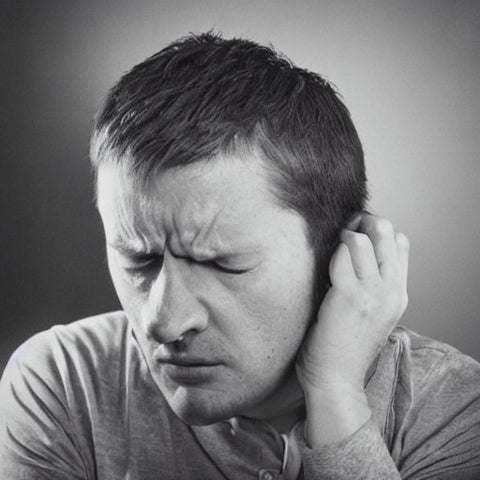How Do I Break Free from the Cycle of Constant Cluster Headaches?
If you are currently experiencing a headache, the next thought that may cross your mind is, "How can I get rid of my cluster headaches?" The good news is that cluster headaches may be treated in a variety of ways, including medication, surgery, and even some drugs that are used to treat seizure disorders.
Acute Treatment
Acute treatments are aimed at providing speedy relief from the symptoms of cluster headache episodes.
- Oxygen therapy is a treatment for cluster headaches that consists of breathing 100% pure oxygen via a mask and doing so for 15–20 minutes at a time during an episode. Oxygen therapy is regarded to be one of the most effective therapies for cluster headaches, and it may bring relief as quickly as 15 minutes after the treatment has been administered.
- Triptans are a family of drugs that have been developed in particular for the purpose of treating migraines and cluster headaches. Cluster headaches are characterized by severe pain and other symptoms that may be alleviated by taking triptans, which operate by narrowing the blood channels in the brain. Tablets, injections, and nasal spray formulations are some of the current options for administering these drugs.
- Dihydroergotamine, often known as DHE, is a medicine that works in a manner similar to triptans but may either be injected or taken in the form of a nasal spray. In addition, DHE has the ability to offer almost instant relief from cluster headache episodes.
Treatment that Is Preventative
Options for preventative therapy aim to lessen the intensity and frequency of cluster headaches for patients throughout the course of their treatment
- The calcium channel blocker known as verapamil is one medication that has shown promise in reducing both the frequency and severity of cluster headaches. Verapamil, which is regarded as one of the most effective prophylactic therapies for cluster headaches, may be given on a daily basis to avert the onset of headaches, and this practice is considered standard practice.
- Lithium is a medicine that is often used in the treatment of bipolar illness; however, this medication has also been shown to be effective in the prevention of cluster headaches. Cluster headache sufferers who take lithium may have a reduction in both the frequency of their attacks and the degree of their pain; however, this improvement may not be noticeable for many weeks.
- Topiramate is an antiepileptic medicine that has been shown to be effective in reducing the frequency of cluster headaches. Topiramate is effective because it inhibits activity in certain regions of the brain that are thought to have a role in the formation of headaches.
- Melatonin is a hormone that is often used as a sleep aid; however, recent research has shown that it may also be helpful in reducing cluster headaches. The sleep-wake cycle may be more easily controlled with the use of melatonin, and cluster headaches can be experienced less often.
- Steroids are one class of anti-inflammatory drugs that have been shown to be effective in preventing cluster headaches. Steroids are often administered intravenously or orally, and short courses of treatment are typically prescribed for usage during the active cluster phase.
Other Suggested Treatments For Cluster Headaches:
- Drugs: Triptans, ergots, and corticosteroids are just some of the medications that have been shown to be effective in treating cluster headaches. Ergots have the potential to help decrease inflammation in the blood vessels, while triptans act by constricting the blood vessels in the brain to achieve their desired effect. Inflammation may be reduced throughout the body with the use of corticosteroids.
- Modifications to one's lifestyle: If you suffer from cluster headaches, making modifications to one's lifestyle may assist to lessen both the frequency and intensity of these headaches. This may include avoiding stressors like alcohol and certain meals, as well as engaging in stress-relieving activities like yoga or meditation.
- Nerve blocks: During this operation, a local anesthetic and/or steroid is injected into the nerves that are thought to be responsible for the cluster headache. This could make the pain and suffering connected with the headache a little bit easier to bear.
- Surgery: A physician may suggest surgery as a treatment option for cluster headaches in some patients. A microvascular decompression surgery or a gamma knife surgery are both examples of the kind of surgeries that fall under this category.
- Acupuncture: This type of traditional Chinese medicine includes the insertion of small needles into certain sites on the body in order to assist reduce pain as well as other symptoms that are connected with cluster headaches.
Symptoms
Cluster headaches are a particularly debilitating kind of headache. They usually endure for anything between six and twelve weeks, although they may often continue for months or even years. If it is not addressed, the discomfort may prevent a person from getting enough sleep and lead to other medical issues. In most cases, the discomfort is localized to only one side of the head.
The symptoms include a runny nose, congestion, nausea, excessive perspiration, and agitation to an extraordinary degree. Sometimes the suffering is so severe that a person has thoughts of ending their own life. It makes it difficult to maintain equilibrium as well.

An imbalance in the hypothalamus is the root cause of cluster headaches. This is a very tiny region located deep inside the brain that is responsible for regulating hormones as well as the temperature of the body. On the other hand, experts aren't quite sure what brings on cluster headaches.
Alcohol, heat, and changes in the weather are the three things that bring on cluster headaches in people the most often. Cluster headaches may strike at any moment, however the majority of sufferers report that their symptoms are at their worst between the hours of early evening and early morning.
Cluster headache sufferers have access to a variety of effective therapies for their condition. Among them are drugs that stop the headache in its tracks as soon as it begins, known as abortives. Oxygen therapy, corticosteroid therapy, and calcium-channel blockers are some of the other treatment possibilities.
A test called magnetic resonance imaging, or MRI, may be helpful in determining whether or not there are underlying health issues. The magnetic resonance imaging (MRI) technique is a non-invasive method that generates x-ray pictures via the use of radio waves and magnets.
Various possibilities for treatment
Cluster headaches are a terrible disease, but they are treatable with the appropriate medical team on your side. Your doctor may recommend medications to assist ease the discomfort and reduce the frequency of headaches. You might also join a support group for those who are afflicted with the condition. You may have to submit to a battery of examinations in order for your symptoms to be diagnosed, and this will depend on how severe your headaches are.
Cluster headaches are characterized by a persistent, intense pain in the head that often reaches its peak between five and ten minutes after the onset of the headache. Pain may extend to other parts of the face, including the gums, the nose, and other sections of the face that are located on the same side of the body as the attack. They may take place as often as four times a day and may continue for many weeks at a time.
If you are getting cluster headaches, your primary care physician may suggest that you see a neurologist for further testing. Your balance, perceptions, and nerves will all be evaluated throughout this assessment. The vast majority of neurological examinations are brief and should not cause any pain to the patient.

Cluster headaches may be treated in a variety of ways, including via the use of oral drugs, injections, nasal sprays, neurostimulators, breathing exercises, and even surgery. In extreme cases, surgery may be the only option left, but it has the potential to end the headaches for good.
Both triptans and calcium channel blockers are examples of drugs that have this effect on the blood arteries. Migraine sufferers will find relief from the discomfort that this provides. On the other hand, they have been linked to digestive issues and low blood pressure. Women who are pregnant and adults who already have heart problems should not use these medications.
Trigeminal autonomic reflex
An portion of the hypothalamus is stimulated whenever someone has an incident of cluster headaches. It is considered that this area is responsible for a significant part of the pathophysiology of the illness. Additionally, it has been linked to both the perception of pain and the regulation of pain.
The sphenopalatine ganglion and the face cranial nerve are both involved in the trigeminal autonomic reflex, also known as the TAC. This reflex route stimulates the parasympathetic branch of the autonomic nervous system, which in turn is responsible for regulating involuntary bodily functions.
A TAC is made up of many afferent nerve fibers, which are responsible for transmitting signals from the face, eyes, and mouth to the brain. After then, the impulses travel throughout the cranium and are responsible for a wide range of symptoms. An attack is identified by a severe pain that may extend to the forehead or jaw over the course of the assault. The illness may be life-limiting and incapacitating for a person, depending on the sort of pain that they are experiencing.
Recent developments in neuroimaging methods have shed light on a particular region of the hypothalamus that becomes active during episodes of cluster headaches. The activation of this region may be responsible for the clinical result; however, these data do not definitely establish this conclusion.
Multiple studies have shown that occipital nerve stimulation is an effective treatment for people suffering from migraines and cluster headaches. As part of this operation, a steroid and a local anesthetic are administered in order to block the occipital nerve.
Prednisone
A popular medication that is also quite useful in the treatment of cluster headaches is prednisone. However, this potent medication is associated with a plethora of adverse effects. It is possible for it to bring on headaches, nausea, and diarrhea.
There are potential risks associated with some of these adverse effects. The best course of action is to gradually lessen one's dependence on the substance. If you have a fever, you should see a doctor right away. It is possible that you won't be able to take another dosage for a week.
Weakness in the muscles is yet another adverse effect of prednisone. This condition arises when the body fails to produce a enough amount of the hormone cortisol, which is essential to the body's normal functioning. Joint discomfort may be brought on by a shortage of cortisol.

Prednisone is an effective immunosuppressant, however it is not known exactly how or why it works. It is possible that if the immune system's reaction is lowered, then the severity of the attacks might be lowered as well.
When treating cluster headaches, Prednisone shouldn't be used for an extended period of time. It is possible to have withdrawal symptoms, including extreme nausea, dizziness, and stomach pain.
When treating cluster headaches, it is common practice to combine Prednisone with one or more other preventative medications. Verapamil, zolmitriptan, and sumatriptan are some of the drugs that fall under this category. You may either take them orally or use a nasal spray to administer them.
In a recent trial, the use of prednisone resulted in a reduction in the average number of days that cluster episodes occurred. To be more specific, the difference was -0.3. At the conclusion of the research project, 71% of patients reported that the frequency of their attacks had decreased by at least 50%.
The mineral lithium carbonate
Pain that is strong and localized to one side of the head is a hallmark of cluster headaches. These headaches often strike in the evening and may last anywhere from a few minutes to many hours. The spring and the fall are the seasons in which they are most common.
Both symptomatic and preventative approaches are used in the treatment of cluster headaches. A nerve block, oxygen inhalation, and the use of local anesthetics in the nose are some of the symptomatic treatment options that are available. There are many more possibilities. The primary objective of preventative therapy is to forestall the occurrence of further episodes.
According to the findings of a few pieces of research, high-flow oxygen treatment has the potential to cut down on both the frequency and intensity of cluster headaches. Nevertheless, further research is required to elucidate the mechanism of action.
Stimulation of the occipital nerve and non-invasive stimulation of the vagus nerve are two other therapy approaches. In the medical technique known as a nerve block, a local anesthetic is injected into the occipital nerve. This block may prevent pain impulses from reaching the brain, hence reducing the occurrence of cluster headaches.
Both verapamil and sodium oxybate are examples of medications that have been investigated for their potential use as preventative treatments for cluster headaches. Although there is minimal scientific proof, both medications have shown beneficial impacts on the level of headache pain they cause.
Both episodic and chronic forms of cluster headaches have been investigated as potential treatment areas for lithium. In most of the investigations, the dosage that was employed was 900 mg per day. Even though lithium carbonate had fewer adverse effects, it nevertheless caused some to shake uncontrollably and have diarrhea.
Anti-seizure drugs
Cluster headaches may be treated or prevented by using anti-seizure medication, which may be recommended by a doctor. Cluster headaches are characterized by recurring episodes of severe pain that spread across the whole head and neck and may last for days at a time. In most cases, the discomfort is greatest in the evening. These assaults do not pose a danger to a person's life, but they may significantly disrupt a person's way of life.
Migraines come in a variety of forms, including cluster headaches. They tend to occur at the same time every day and follow a pattern that repeats itself. The duration of the pain might range anywhere from 15 to 180 minutes.
Alcohol, certain odors, and changes in the weather are the three things that bring on attacks most often. In addition, a significant number of cluster headache sufferers also struggle with clinical depression. Treating an illness of this kind is a very challenging endeavor. Treatment, on the other hand, may reduce the amount of episodes and make patients feel like they have a greater degree of control over the illness.

Cluster headaches may be managed with a combination of neuromodulation, neuropreventative therapy, and abortive medication. A number of prescription medicines are administered intravenously, while others are used orally.
Lithium is the drug that is utilized as a preventative measure the most. Cluster headaches may be avoided by using lithium carbonate, which helps bring the chemical levels in the brain back into equilibrium. Patients who are taking this medication are need to undergo routine blood tests in addition to having their kidneys and liver closely monitored.
Subcutaneous sumatriptan is the medication that is most often recommended for the immediate treatment of cluster headaches. A selective serotonin receptor agonist, sumatriptan is used to treat migraines. It works by narrowing the blood arteries in the brain, which prevents more assaults from occurring.
Surgery
There are several different treatment options available for cluster headaches whenever they manifest. While some therapies begin to alleviate symptoms almost immediately, others need more time before they start to work. Medication is often used both in the treatment of acute episodes and in the prevention of further attacks.
Cluster headaches may be treated with a variety of different surgical procedures, in addition to the many pharmaceutical treatments. The surgical procedure is an option that should be considered as a last resort, particularly for people who have tried alternative therapies without results.
It is possible that the only solution for some individuals to get relief from their cluster headaches is to undergo surgical therapy. On the other hand, it is also possible for it to have a great deal of unfavorable impacts.
Occipital nerve stimulation is one surgical approach that has shown to be beneficial in the treatment of certain patients. During this procedure, a tiny gadget will be implanted over the occipital nerve so that it may deliver impulses via electrodes.
Microvascular decompression of the trigeminal nerve is an additional alternative for surgical treatment. Because it separates the nerve from the blood vessels, this treatment may be beneficial in treating trigeminal neuralgia in certain patients. However, there is a significant possibility of unfavorable consequences, such as damage to nerves and impaired eyesight.
The use of deep brain stimulation has also shown some potential. In order to provide this therapy, an electrode is surgically implanted into the hypothalamus. This procedure intends to change the electrical impulses in the brain, which, if successful, should result in a reduction in both the frequency and intensity of cluster headaches.

































Leave a comment